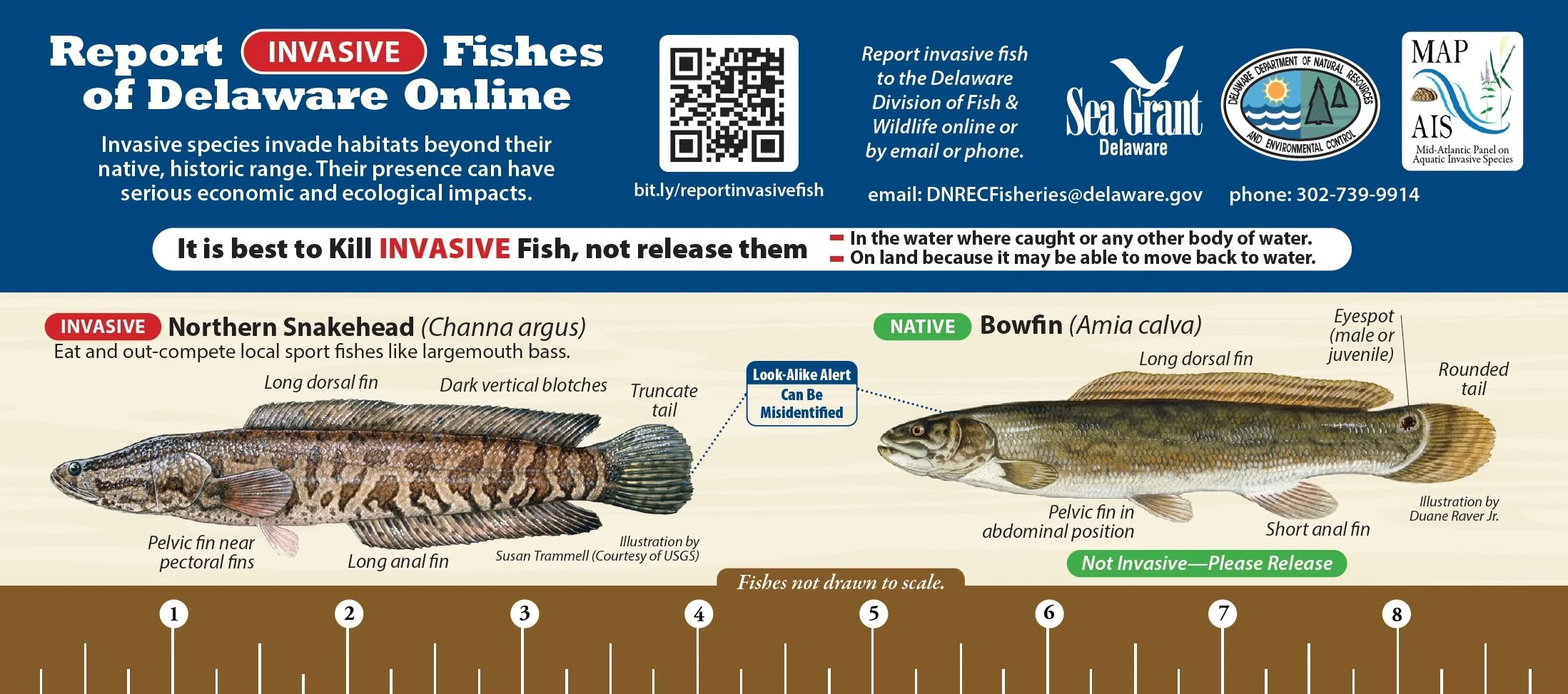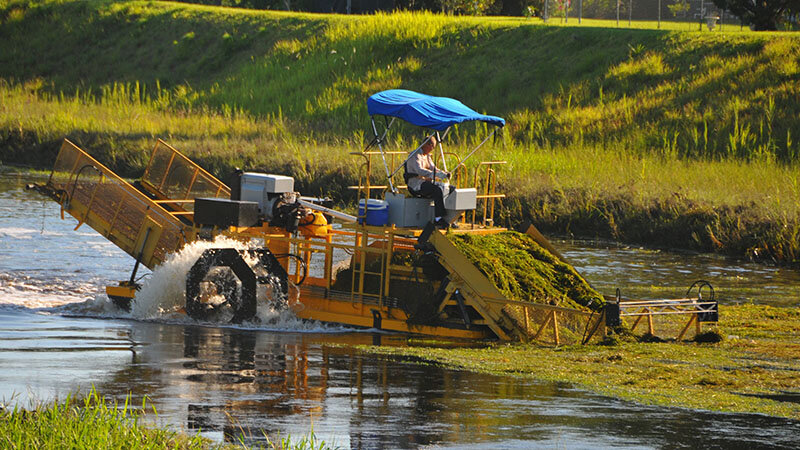
Invasive species—whether plants, fish, mollusks, crustaceans or others—threaten local wildlife through outcompeting them for resources, outright predation, or altering habitat
Some invasive species also create economic harm or impact human health. An organism’s status as invasive, native or simply introduced (not native but not invasive either) is tied more to the complex web of relationships in a given place than to the individual animal itself. What is an invasive challenge in some places can be struggling in their native range; for instance, alewives are a problematic invasive in the Great Lakes, but they are a species of conservation concern in Delaware, part of their native North Atlantic coastal territory.
Invasive species enter habitats in a variety of ways, from being intentionally introduced before their potential impact is understood to accidental introduction through discarded bait or pets, ballast water, or even transport on the hulls of boats
In Delaware and the Mid-Atlantic, a variety of aquatic invasive species affect both freshwater and saltwater habitat, and terrestrial ecosystems face their own invasive challenges. Learn more about some of the invasive species in our area and what you can do to help below.
Invasive Fish Card
Download our invasive fish card for guidelines on how to identify invasive fish species and other tips. You can also pick up the cards at select state and town parks throughout Delaware, or contact us to request one.
Storymaps
Invasive Crabs of Delaware
In this Storymap by DESG education specialist David Christopher, you’ll learn about Delaware's invasive crabs, how their populations have changed over time, and how they impact the the environment.
Video
15 Second Science: Invasive Species
Check out our 15-Second Science playlist focused on tips for spotting invasive species in Delaware, including mitten crabs, phragmites, flathead and blue catfish, and more.
Invasive Fish in Delaware
Stopping the spread of invasive species is key to protecting our native species and habitat. Learn what you can do to help in this Storymap by DNREC environmental scientist Lori Brown.
Aquatic Invaders: Invasive Fishes with Edward Hale
Learn more about how you can help Delaware's Division of Fish and Wildlife track the occurrence of invasive fish species in our waterways by watching this lecture from DESG specialist Ed Hale.
Resources
DNREC’s reporting webpage
You can help Delaware's Division of Fish and Wildlife track the occurrence of invasive fish species in our waterways by using this form to report catches and help prevent their spread.
Mid-Atlantic Field Guide to Aquatic Invasive Species
Created by Pennsylvania Sea Grant, this field guide is designed to aid science professionals and other interested individuals in aquatic invasive species early detection and reporting.
Delaware Invasive Species Council
Learn more about this coalition that aims to protect Delaware’s ecosystems by preventing the introduction and reducing the impact of non-native species. Also, be sure to check out the Council’s post on the discovery of Zebra Mussels on moss balls sold as aquarium plants.
Smithsonian Environmental Research Center
The SERC’s page serves as a resource to track the current distribution and status of the Chinese Mitten Crab in the U.S. Mid-Atlantic and beyond, including all coasts of North America.
Sea Grant Mid-Atlantic Network: Invasive Species
Sea Grant programs in the Mid-Atlantic region work with natural resource professionals, educators, decision-makers, and communities to “Stop the Spread” of invasive species.








